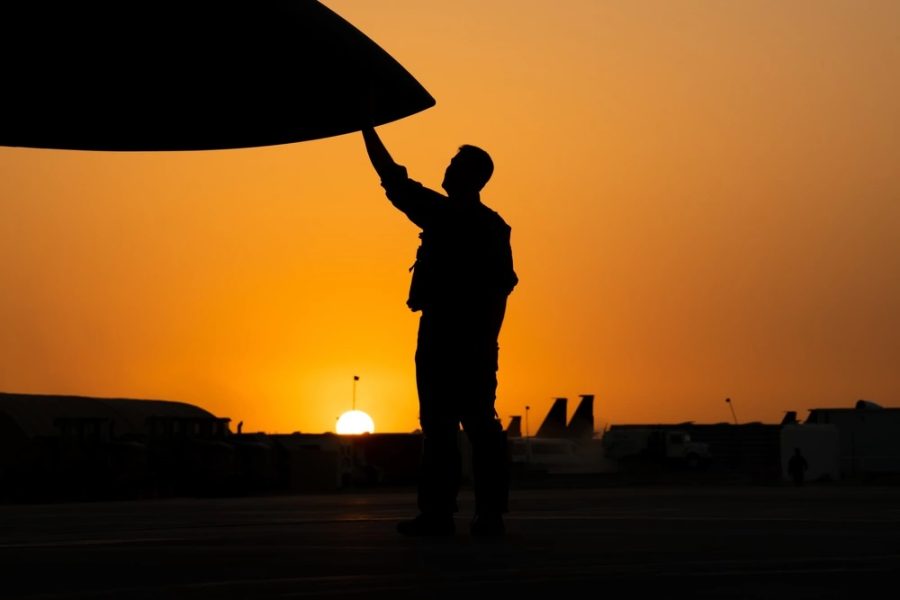Service members and veterans who are in crisis or having thoughts of suicide, and those who know a service member or veteran in crisis, can call the Veterans/Military Crisis Line for confidential support available 24 hours a day, seven days a week, 365 days a year. Call 988 and press 1; text 988; or chat online at VeteransCrisisLine.net/Chat.
The Department of Defense is late delivering a congressionally mandated report breaking down suicide deaths since 2001 by military job specialty, a report which one veteran advocate said is essential for the military to understand its ongoing struggle with suicide and mental health.
“Anecdotally we know it’s really bad in certain career fields,” retired Air Force Master Sgt. Chris McGhee told Air & Space Forces Magazine. “I consider this to be a starting point to investigate what is going on within those career fields that is driving these suicide rates.”
A VA disability attorney who served 20 years as an F-16 maintainer, McGhee worked closely with lawmakers on Section 599 of the 2023 National Defense Authorization Act. The provision requires the Pentagon, along with the Department of Homeland Security for the Coast Guard, to file a report on suicides by Dec. 31, 2023. The report must break down the data by year, military job code, and whether the member was Active-duty, in the Reserves, or in the National Guard.
The report must also compare the per capita suicide rate in each career field to other military fields, to the overall suicide rate for each service and the wider military, and to the national suicide rate over the same period of time. Section 599 also required an interim briefing no later than June 1, 2023. Sen. Angus King (I-Maine), the provision’s sponsor, told Military Times in 2022 that it would help refine the military’s prevention efforts.
“It seems like something we need to know,” he said. “There is a high level of interest in the subject, but in my view that interest has been more generalized and not really focused as finely as it should be.”
On March 12, about two months after the deadline passed, McGhee penned an open letter to members of the House and Senate Armed Services Committee urging them to pressure the Pentagon to release the data.
“You are vested with a sacred duty to execute oversight authority over the Department of Defense,” he wrote. “By not employing your full authority to expedite the release of this study, you become complicit in the ongoing delay.”
He also posted the letter to the unofficial Air Force Reddit page, where it drew hundreds upvotes and dozens of comments. Most of the lawmakers addressed in the letter have not yet responded, McGhee said. Meanwhile, the Pentagon said it is still working on the report.
“The Department requires additional time to further analyze the data, make appropriate and reliable comparisons, and address all requirements set forth in section 599 and anticipates providing the full report to Congress later this year,” Defense Department spokeswoman Jade Fulce told Air & Space Forces Magazine.

Once the report does come out, McGhee hopes it can help the military better understand the unique pressures facing each career field. In the Air Force, aircraft maintenance and security forces have historically been associated with higher suicide rates, but little data on the subject is available to the public.
The 2020 Department of Defense Suicide Event Report included a chart breaking down suicide deaths by career field, but it lumped together many occupations so that the data could be compared between the services. Even so, it shows a wide range in different career fields’ share of suicide deaths. For example, in the Active-duty Air Force, electrical and mechanical equipment repairers and functional support and administration suffered the highest portion of the service’s enlisted suicide deaths (20.5 percent each), while craftsworkers had the lowest (2.7 percent) among career fields with reported suicide deaths.
“The military is a diverse population,” McGhee said. “Lots of people coming from lots of backgrounds, and they all go through the same indoctrinations before they move out into their career fields, where we start to see disparate rates of suicide. That indicates there is something going on in that particular community.”
McGhee retired from the Air Force in 2018, and he blamed the tough working conditions in aircraft maintenance on a long trend of underinvestment and poor policy choices stretching back to 2007, but which intensified in the years after the 2013 U.S. budget sequestration, where the Air Force was reduced by about 20,000 Airmen in two years. The Joint Chiefs of Staff warned Congress at the time that the military was becoming “a hollow force.”
The Air Force built manpower back up over the ensuing years, but the number of suicide deaths spiked in the late 2010s and early 2020s. McGhee said the situation in Air Force maintenance is similar to the one in Army tank brigades covered by a recent Army Times investigation, which found that high operational tempo and not enough equipment or Soldiers meant the suicide rate for Army tank crews was nearly three times higher than the rest of the service between 2019 and 2021.
“That is exactly what we experienced in aircraft maintenance,” he said. “It is just caustic and terrible.”
McGhee wants the Defense Department to publish its data not just so the military can better understand its suicide rates, but also to help the services make an argument for appropriate funding to Congress.
“When a certain career field has a higher suicide rate, it draws your inquiry to why, which is the whole reason why this study is so important,” McGhee said.
